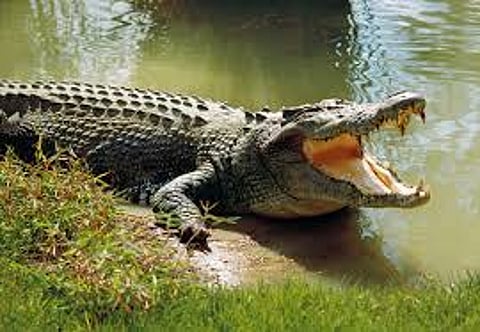Hatching Hope: Gharial Conservation Milestones Mark World Crocodile Day
Agra, 20 (TNA) Three days after the World Crocodile Day, encouraging developments emerged from the Chambal River near Agra and the Gandak River in Bihar. The Chambal River, home to the world's largest Gharial sanctuary in Bah tehsil of Agra district, witnessed around 100 newly hatched Gharials (Gavialis gangeticus) making their way from riverbank nests to the water.
These eggs were laid between March and April this year. This unique sanctuary falls in UP, Rajasthan, and MP. Since its inception in 1979, the Gharial conservation project at Chambal River has flourished, now housing thousands of these unique reptiles. However, increasing urbanization and water extraction pose new threats to their habitat.
Agra’s biodiversity researcher, Dr Mukul Pandya, expressed concern over the extensive use of Chambal water by farmers and state agencies, which also endangers the Gangetic Dolphins needing deep waters. He noted that chemical fertilizers contribute to algal blooms and pesticide runoff, contaminating the river and harming aquatic life.
"World Crocodile Day celebrated on June 17 annually, highlights the plight of endangered crocodiles, distinct from Gharials and alligators in snout shape and behavior. Crocodiles can weigh up to 2,200 pounds, while alligators are lighter and less aggressive," Pandya said.
Meanwhile, the Wildlife Trust of India (WTI) reported the successful hatching of 160 Gharial eggs along the Gandak River, monitored over three months across Bihar and Uttar Pradesh. This included the first identified Gharial nest in Uttar Pradesh's Sohagibarwa Wildlife Sanctuary, belonging to a female previously released in Nepal. Of the six nests detected this year, five hatched successfully, and one is pending.
Subrat Behera, Manager of the Gandak Gharial Recovery Project, detailed the success: "Last year, 125 hatchlings were released into the Gandak River. Nest erosion remains a significant threat, but timely intervention saved this year's nests from erosion."
Continuous monitoring, community involvement, and addressing threats like riverbank erosion and predation are crucial for Gharial conservation. Since the Gandak project began in 2013, over 600 hatchlings have been released, boosting the local population. This year’s milestones underscore the importance of sustained conservation efforts and the collaborative work needed to protect these critically endangered reptiles, WTI said.

